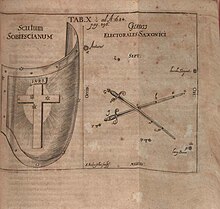
Back Asterismes històrics Catalan Historische Sternbilder German Asterismos históricos Spanish Liste de constellations obsolètes French קבוצות כוכבים מבוטלות HE Costellazioni obsolete Italian 現存しない星座 Japanese Voormalige sterrenbeelden Dutch Gwiazdozbiory historyczne Polish Constelações obsoletas Portuguese


Former constellations are old historical Western constellations that for various reasons are no longer widely recognised or are not officially recognised by the International Astronomical Union (IAU).[1] Prior to 1930, many of these defunct constellations were traditional in one or more countries or cultures. Some only lasted decades but others were referred to over many centuries. All are now recognised only for having classical or historical value.[2] Many former constellations had complex Latinised names after objects, people, or mythological or zoological creatures.[2] Others with unwieldy names were shortened for convenience. For example, Scutum Sobiescianum was reduced to Scutum, Mons Mensae to Mensa, and Apparatus Sculptoris to Sculptor.
Some of the Northern Sky's former constellations were placed in the less populated regions between the traditional brighter constellations just to fill gaps. In the Southern Sky, new constellations were often created from about the 15th century by voyagers who began journeying south of the Equator. European countries like England, France, the Netherlands, German or Italian states, etc., often supported and popularised their own constellation outlines. In some cases, different constellations occupied overlapping areas and included the same stars. These former constellations are often found in older books, star charts, or star catalogues.
The 88 modern constellation names and boundaries were standardised by Eugene Delporte for the IAU in 1930, under an international agreement, removing any possible astronomical ambiguities between astronomers from different countries.[3] Nearly all former or defunct constellations differ in their designated boundaries inasmuch as they have outlines that do not follow the exact lines of right ascension and declination.[4]
- ^ "The Constellations". International Astronomical Union. Retrieved 1 April 2018.
- ^ a b Ian Ridpath. "Constellation names, abbreviations and sizes". Retrieved 1 April 2018.
- ^ Marc Lachièze-Rey; Jean-Pierre Luminet; Bibliothèque Nationale de France. Paris (16 July 2001). Celestial Treasury: From the Music of the Spheres to the Conquest of Space. Cambridge University Press. p. 80. ISBN 978-0-521-80040-2.
- ^ "Constellation boundaries". Retrieved 1 April 2018.